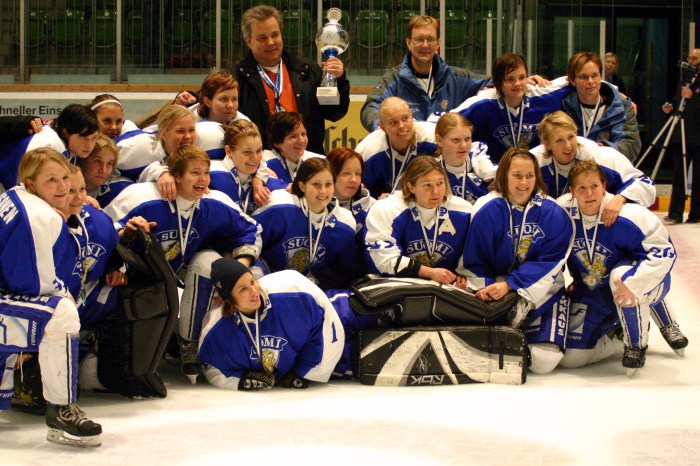
Team sports drills and strategies are essential for fostering teamwork and enhancing communication among players. These practices not only improve individual skills but also elevate the overall performance of the team. Whether you’re on the soccer field, basketball court, or even in martial arts, understanding the right drills and strategic approaches can make all the difference in achieving success.
This exploration delves into effective drills tailored for various sports, focusing on passing techniques, conditioning exercises, and strategic plays. From offensive tactics in football to defensive maneuvers applicable across different sports, this guide covers comprehensive aspects aimed at improving team dynamics and competitive edge.
Team Sports Drills

In the dynamic world of team sports, effective teamwork and communication can make all the difference between victory and defeat. Drills designed for these purposes not only enhance players’ technical skills but also foster a strong sense of camaraderie and understanding among teammates. Here, we will explore a variety of drills that focus on improving teamwork, communication, passing techniques in soccer and basketball, and conditioning tailored for different sports.
Drills for Improving Teamwork and Communication
Teamwork and communication are crucial in any sport, helping players to work together seamlessly during games. The following drills encourage these essential skills, making them integral to team dynamics:
- Circle Passing Drill: Players form a circle and pass the ball around while calling out the name of the receiver. This drill emphasizes vocal communication and helps players develop awareness of their teammates’ positions.
- Two-Ball Passing Drill: Two pairs of players stand facing each other, each with a ball. They simultaneously pass the balls back and forth, focusing on eye contact and timing. This drill enhances communication and coordination under pressure.
- Team Relay Races: Teams compete in relay races that require players to pass a ball or object to their teammates. This drill encourages quick decision-making and reinforces the importance of supporting one another during gameplay.
Effective Passing Drills for Soccer and Basketball
Passing is a fundamental skill that can determine the success of a play in both soccer and basketball. Below are detailed methods for drills that enhance passing accuracy and timing in these sports:
- Soccer Passing Drill: Set up a grid with cones. Players spread out within the grid and practice short passes to one another while moving around. Incorporate variations such as using only one touch or passing with different parts of the foot to simulate game-like situations.
- Basketball Passing Drill: In pairs, players stand a few feet apart and practice chest passes, bounce passes, and overhead passes. Progress to incorporating movement by having them pass while moving around the court. This drill highlights the importance of precision and timing in passing.
Conditioning Drills Tailored for Different Team Sports
Conditioning is vital for enhancing the endurance and agility of athletes in team sports. The following drills cater to diverse sports while focusing on building stamina and strength:
- Soccer Conditioning Drill: Incorporate shuttle runs where players sprint between two cones placed at varying distances. This helps simulate the stop-and-start nature of a soccer game, building both speed and endurance.
- Basketball Conditioning Drill: Implement a ladder drill where players perform quick footwork exercises using an agility ladder. This enhances their agility, coordination, and overall cardiovascular fitness.
- General Team Conditioning Drill: Create a circuit that includes exercises such as burpees, sprints, and cone drills. Teams rotate through stations to build strength, agility, and teamwork simultaneously.
Strategies for Team Sports

In team sports, having a solid strategy can significantly impact performance and outcomes. Strategies guide players in their decision-making and help them work cohesively towards a common goal. Effective strategies often involve a blend of offensive and defensive tactics, tailored to the strengths and weaknesses of both the team and the opponents.
Offensive Plays in Football and Basketball
Offensive strategies in sports like football and basketball are crucial for scoring and creating opportunities. In football, strategies may include formations such as the spread offense, which spreads the defense out and creates space for passing plays. Utilizing plays like the zone read can also be effective, allowing the quarterback to make quick decisions based on the defense’s alignment.In basketball, offensive strategies often revolve around ball movement and spacing.
The pick-and-roll play is a staple, where one player sets a screen for another, creating mismatches and open shots. Additionally, implementing motion offense encourages continuous movement, making it difficult for defenders to maintain coverage.
Defensive Strategies Across Multiple Team Sports
Effective defensive strategies are essential for countering the offensive plays of opponents. Many strategies can be adapted across various team sports. For instance, man-to-man defense is commonly used in basketball, but similar principles apply in football, where defenders cover specific opponents to prevent scoring opportunities.Zone defenses can also be effective in both basketball and soccer. In basketball, a 2-3 zone can limit inside scoring by protecting the paint, while in soccer, a flat 4-4-2 formation can help maintain defensive structure.
In all sports, communication and teamwork are pivotal in executing these strategies successfully.
“A strong defense creates opportunities for offense, illustrating the synergy between both sides of the game.”
Importance of Game Strategies in Enhancing Team Performance
Game strategies play a vital role in maximizing a team’s performance and ensuring that players are aligned in their objectives. By analyzing an opponent’s weaknesses and strengths, a team can develop tailored strategies that exploit gaps in their defense or counteract their offensive threats. Implementing strategies not only improves individual performance but also fosters team cohesion. When players understand their roles within a strategy, they can work more effectively together, leading to better teamwork and communication on the field or court.
Over time, these strategies evolve through practice and experience, continuously refining the team’s approach to varying opponents and game situations.
Related Sports and Their Drills
Team sports often share various techniques and strategies, and this extends into different sporting disciplines. Exploring drills used in martial arts, unique strategies in motorsports, and comparisons between water and winter sports can provide valuable insights into how teamwork and discipline can be cultivated across various environments. By understanding these principles, teams can enhance their cohesion and performance, benefiting from practices that transcend their specific sports.
Common Drills in Martial Arts to Improve Teamwork and Discipline
In martial arts, drills focus significantly on enhancing individual abilities while fostering a sense of unity among practitioners. These drills not only build physical skills but also emphasize mental discipline and mutual respect. Important drills include:
- Partner Drills: Practicing techniques in pairs allows martial artists to work closely, developing timing and contact sensitivity. For instance, in Brazilian Jiu-Jitsu, partners take turns applying submissions and escaping, honing their skills while relying on each other for safety and feedback.
- Group Sparring: Engaging in controlled sparring sessions with multiple participants cultivates awareness of surroundings and teamwork. This is especially effective in karate, where students learn to anticipate opponents’ moves while maintaining focus on their teammates.
- Relay Races: Utilizing relay races to teach strikes or kicks in a competitive format encourages camaraderie. Participants motivate one another to push their limits while reinforcing a collective goal.
“Martial arts instill discipline and focus, making teamwork a crucial aspect of training and competition.”
Unique Strategies in Motorsports Adapted for Team-Based Sports
Motorsports offer a unique perspective on teamwork, as drivers rely heavily on their crew for strategy and execution. Key strategies in motorsports that can be effectively adapted to team sports include:
- Pit Crew Collaboration: The efficiency of pit crew teams showcases seamless communication and coordination, essential for maximizing performance. Team sports can implement similar quick-change strategies during game pauses, allowing for swift adjustments in tactics.
- Data Analysis: Motorsports rely on real-time data to make instantaneous decisions. Team sports can benefit from applying data analytics to assess performance and strategize in real-time, ensuring that teams can adapt their approach as the game unfolds.
- Role Specialization: Each pit crew member has a designated role, fostering a sense of responsibility. In team sports, clearly defining roles allows players to excel in specific areas while supporting the team’s overall strategy.
“The synergy in racing teams exhibits how collaboration can lead to success, a principle applicable in any team environment.”
Comparison of Team Drills in Water Sports versus Winter Sports
Water sports and winter sports each present unique challenges that influence their respective team drills. Understanding these differences is crucial for coaches and athletes in optimizing training approaches.
- Water Sports Drills: In sports like rowing and synchronized swimming, drills often focus on rhythm and synchronization. Team members practice together in the water, ensuring that movements are perfectly timed. For example, in rowing, teams might utilize stroke drills to enhance their collective fluidity and power output.
- Winter Sports Drills: In sports such as ice hockey or team skiing, drills emphasize agility and teamwork on icy surfaces. For example, in ice hockey, players run drills that simulate game scenarios, focusing on puck control and positioning while working together to adapt to dynamic conditions on the ice.
“While water sports emphasize fluid movement and timing, winter sports focus on agility and adaptability in challenging environments.”
Closing Notes
In conclusion, mastering team sports drills and strategies is a journey that significantly impacts team cohesion and performance. By integrating thoughtful drills and strategic insights, teams can unlock their potential and perform at their best during competitions. Embracing these practices not only prepares athletes physically but also cultivates a winning mentality that drives success on and off the field.
Popular Questions
What are the benefits of team sports drills?
Team sports drills enhance communication, improve individual skills, and foster collaboration, leading to better overall team performance.
How often should teams practice drills?
Teams should aim to practice drills several times a week, balancing skill development with gameplay to ensure optimal performance.
Can drills from one sport be applied to another?
Yes, many drills focus on fundamental skills, such as teamwork and communication, which can be adapted across different sports.
What role do conditioning drills play in team sports?
Conditioning drills are crucial for building endurance, strength, and agility, which are essential for maintaining performance throughout games.
How can teams measure improvement in drills?
Teams can track improvement through performance metrics, feedback from coaches, and comparing results over time to assess progress.





